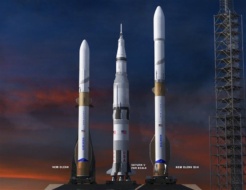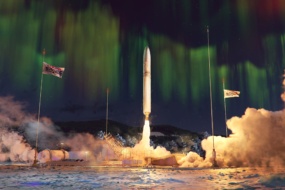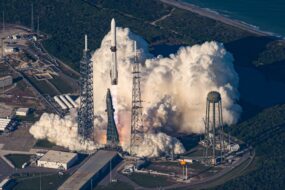Relativity Space began developing a methalox engine for its medium-lift Terran R rocket no earlier than 2021, and first fired it in late 2023. Rocket Lab announced the methalox engine for its Neutron vehicle in 2021, and fired it in 2024.
LEAP 71, a two-person computational engineering firm developing a similar propulsion system for a new reusable launch vehicle, is trying to do the same in about half the time.
“Our goal is to be much faster than everyone else,” founder Lin Kayser told Payload in an email, by using LEAP 71’s proprietary software, Noyron, to rapidly generate designs.
Model of a modern rocketeering firm: Aspire Space, a Luxembourg-based rocket firm, said last week that it would build a reusable medium-lift launcher with a goal of debuting in 2030. LEAP 71 is taking on the propulsion system—the heart of any rocket development effort—and is aiming to start firing the second-stage engine in Q3 2026.
Aspire CEO Stan Rudenko said his rocket company was “self-funded” but wouldn’t disclose how much capital they had amassed; their development and test plans in the UAE indicates one likely backer at a time when rockets are vital strategic assets.
Rudenko forecasts that the entire project—a launcher capable of 15 tons to LEO, a reusable spacecraft aimed at commercial space stations, the required ground infrastructure and the first flight—will cost more than $1B.
Name of note: Aspire’s CTO is Sergey Sopov, a long-time Russian space engineer who helped design the Dnepr rocket, and the team is apparently stocked with aerospace engineers hailing from the former Soviet orbit.
Great Leap Forward: Kayser, who advised Isar Aerospace, co-founded LEAP 71 with Josephine Lissner in 2023, and some of its earliest work is with The Exploration Company on spacecraft propulsion systems. In one recent demonstration, the company fired a 5 kn aerospike engine, built by subcontractors based on its designs.
The hard thing about hard things: While Kayser expects his learning software to deliver a major advantage over competitors, one obstacle in front of his development effort is real estate.
“Our biggest challenge is access to physical testing locations, as even the UAE is quite densely populated,” Kayser told Payload. “I would argue that’s the critical path for almost every new space startup.”




